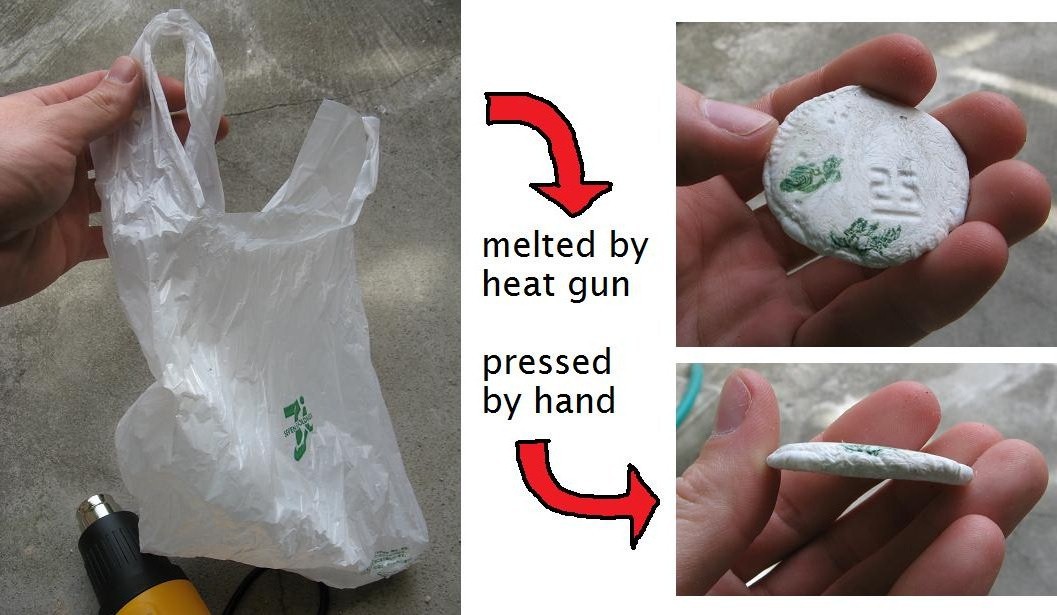How much plastic are we talking about? Just to see, I grabbed a medium size bag and melted it down with a heat gun. When it was nice and gooey I pressed it flat with a jar that apparently had the number 25 cast on the bottom. This is what it looked like.

It weighs about 5 grams and is probably loaded with air bubbles. If it were properly compressed before melting it would probably have much less air and thus be much smaller. Ideally it would be shredded into small bits and compressed so there would be no trapped air inside, but shredding is not as easy as it sounds. Just to see if it were possible I ran a bag through my paper shredder and then spent 30 minutes pulling out bits of plastic that were wedged between the cutters.
How do I get it into the tube? That's a big question. I've been thinking about it and experimenting with various ideas.
- Use a vacuum to suck the bag into the tube. Nope, the bag just gets stuck on the end of the tube.
- Use a funnel with the vacuum idea to guide it in. Nope, same problem.
- The pin idea, which I've described before. Maybe, but it's not so easy to get the bag to wrap tightly as it just slips on the rotating pin. There are ways to make it stick better, but then how would I get the pin out? Plus, this adds lots of moving parts and complexity.
- Remus's idea of the input rollers feeding directly into the tube. Maybe. I haven't tried it because I don't have a set of rollers figured out.
But after much effort trying to get a bag into a tube I found that by far the easiest, simplest, and most reliable way to do it is by hand.
- Roll, crumple, or otherwise manage to stick a little of the bag into the tube. Use a narrow rod to push it the rest of the way in. It slides in easily and works every time. It also does away with the need for input rollers.
There are some downsides to this method. Since the human is responsible for sticking the thing in the place it is necessary for the human to be intelligent and not want to break the machine for fun. That's asking a lot of the general masses. But for the sake of prototyping and getting a working device built, I will assume it's possible. If this turns into a realistic recycling option, I'll have to be more careful.
 shlonkin
shlonkin
Discussions
Become a Hackaday.io Member
Create an account to leave a comment. Already have an account? Log In.